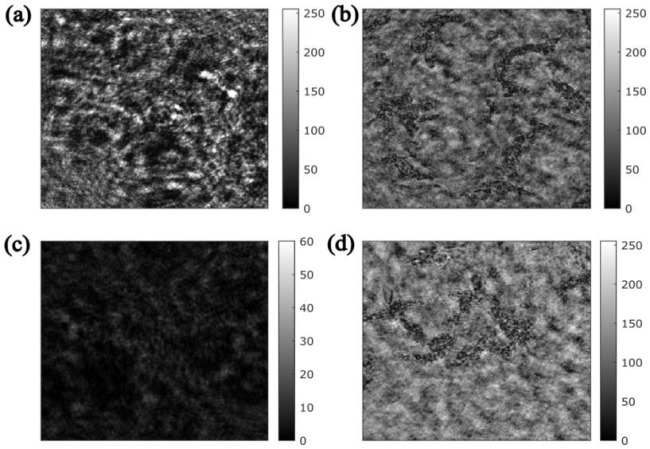Lensless digital holographic microscopy in a low photon budget regime
Bartosz Mirecki
supervisor: Michał Józwik
Lensless digital holographic microscopy (LDHM) is a widely used technique that allows reconstructing an optical field in a unique large field of view and around micrometer resolution. Due to the simple setup, these features are primarily limited by the size of the used CCD matrix and the single-pixel dimensions. An unfocused captured hologram is reconstructed by the numerical propagation to the focused plane, usually realized by auto-focusing algorithms. Reconstructed data carry information about an examined sample's amplitude (absorptive features) and phase (refractive features). We study the LDHM ability to operate in the low photon budget (LBP) regime to enable imaging of unimpaired live cells without phototoxicity and any photo-stimulation. We show that recording data in the LBP regime (down to 7 µW) does not limit the contrast and resolution of the hologram reconstruction in comparison to the regular illumination. LPB generates hardware camera thermal noise. However, we eliminate this by the BM3D numerical algorithm. The ability to obtain high-quality, high-resolution optical field reconstruction was confirmed using: USAF 1951 as amplitude sample, phase resolution test sample, and finally, biological sample. We selected live glial restricted progenitor cells as a challenging biomedical sample to investigate the LDHM system in the LPB regime.

Fig. 1 (a) Standard illumination hologram, (b) reconstructed amplitude from hologram a,
(c) low photon budget regime hologram, (d) reconstructed amplitude from hologram c.